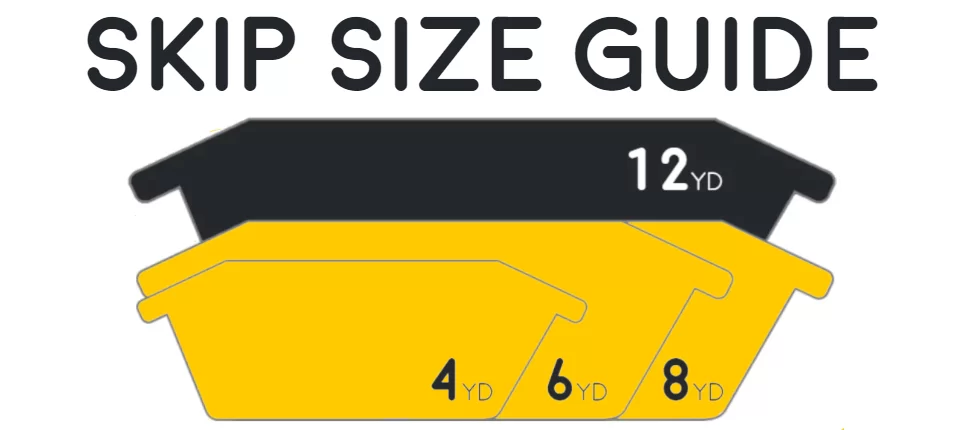Table of Contents
- 1 How do I know what size skip I need?
- 2 Understanding skips and their sizes
- 3 Factors to consider when determining skip size
- 4 Popular skip sizes and their applications
- 5 Choosing the right skip size
- 6 Advantages of selecting an appropriate skip size
- 7 Common mistakes to avoid when selecting a skip size
- 8 Conclusion
- 9 FAQs
- 9.1 Can I change the skip size after it has been delivered?
- 9.2 Is it better to get a larger skip in case I generate more waste than anticipated?
- 9.3 Are there any additional charges for overfilling a skip?
- 9.4 Can I use a skip for hazardous or prohibited waste?
- 9.5 Do I need a permit for placing a skip on the roadside?
How do I know what size skip I need?
When embarking on a project that involves waste disposal, one of the critical decisions you’ll need to make is determining the appropriate skip size. Choosing the right skip size ensures that you can efficiently manage and dispose of waste without unnecessary hassle or additional costs.
Proper waste management is essential to maintaining a clean and organized environment, whether during a home renovation, construction project, or even a spring cleaning session. Skip bins are an ideal solution for handling waste efficiently, but determining the right size can be a perplexing task. The size of the skip you choose should align with the specific requirements of your project, ensuring that it accommodates the amount of waste you generate while considering other crucial factors, such as how much a mini skip will cost.

Understanding skips and their sizes
Before diving into the process of selecting a skip size, it’s important to understand what skips are and how they are classified by size. Skips are large containers, usually with an open top, designed to hold varying amounts of waste. They are commonly used in domestic, commercial, and industrial settings to facilitate proper waste disposal.
Skip sizes are measured in cubic yards, representing the volume of waste they can hold. The size you choose will depend on the amount and type of waste you anticipate producing during your project.
Factors to consider when determining skip size
- Type of waste: Different types of waste have varying volumes and densities. Consider the nature of the materials you will be disposing of to estimate the skip size required.
- Quantity of waste: An accurate estimation of waste volume is crucial. Assess the amount of waste you expect to generate, factoring in any anticipated changes during the project’s duration.
- Accessibility and space limitations: Evaluate the available space where the skip will be placed. Consider any accessibility restrictions, such as narrow pathways or low overhead clearance, that may influence the skip size selection.
- Duration of the project: The length of your project impacts the waste accumulation. Longer projects may require larger skips or even multiple skips if space permits.
- Local regulations and permits: Ensure compliance with local regulations regarding skip placement and waste disposal. Some areas may have restrictions on skip sizes or require permits for certain skip sizes.
Popular skip sizes and their applications
There are various skip sizes available, each suited for different purposes. Here are a few commonly used skip sizes and their general applications:
Mini skips (2-3 cubic yards)
Mini skips are the smallest available skips and are typically used for small household projects or garden clearances. They can hold approximately 25-35 bin bags of waste.
Midi skips (4-6 cubic yards)
Midi skips are a popular choice for small to medium-sized projects, such as bathroom or kitchen refurbishments. They can accommodate around 45-65 bin bags of waste.
Builder’s skips (6-8 cubic yards)
Builder’s skips are commonly employed in construction or renovation projects where the waste volume is higher. They can hold approximately 80-110 bin bags of waste, making them suitable for larger domestic projects as well.
Large skips (10-16 cubic yards)
Large skips are ideal for substantial projects generating a significant amount of waste, such as office clearances or larger construction projects. They can hold approximately 130-220 bin bags of waste.
Choosing the right skip size
Selecting the appropriate skip size requires careful evaluation of different factors. Follow these steps to ensure you choose the right skip size for your needs.
- Assessing waste volume: Estimate the approximate volume of waste you anticipate generating. Consider the types of materials and their expected quantities to determine a suitable skip size.
- Considering space requirements: Evaluate the available space and any access limitations. Choose a skip size that comfortably fits within the designated area without obstructing walkways or other necessary access points.
- Discussing with waste management companies: Seek advice from waste management professionals who can provide expert guidance based on your project specifications. They have the experience to determine the ideal skip size for your project based on waste types, quantity, and other factors.
Advantages of selecting an appropriate skip size
Choosing the right skip size offers several advantages, including:
- Cost-effectiveness: Opting for the appropriate skip size prevents unnecessary expenses. By selecting a skip that accommodates your waste volume accurately, you avoid overpaying for a larger skip or requiring multiple collections for an undersized one.
- Efficient waste management: Properly utilizing the skip’s capacity allows for more efficient waste disposal. You can avoid overflowing skips or making additional trips to dispose of excess waste.
- Environmental considerations: Selecting a skip size that matches your waste volume reduces unnecessary landfill usage. By efficiently managing waste, you contribute to sustainable waste disposal practices.
Common mistakes to avoid when selecting a skip size
To ensure a smooth waste disposal process, be mindful of these common mistakes when determining skip sizes:
- Underestimating waste volume: Failing to accurately estimate your waste volume can lead to selecting a skip that is too small for your needs, resulting in overflowing waste and potential additional costs.
- Overestimating skip size: Conversely, overestimating your waste volume can be wasteful and costly if you end up with a skip that is much larger than necessary.
- Ignoring space constraints: Neglecting to consider the available space for the skip can lead to difficulties in skip placement or disruptions to access points if the skip is too large.
- Disregarding legal requirements: Ensure compliance with local regulations when it comes to skip placement, permits, and allowed skip sizes.
Conclusion
Selecting the right size skip is crucial for a successful waste management process during any project. By considering the type and quantity of waste, accessibility limitations, project duration, and local regulations, you can make an informed decision. Taking the time to choose the appropriate skip size will save you money, ensure efficient waste disposal, and contribute to environmentally conscious practices.
FAQs
Can I change the skip size after it has been delivered?
In most cases, skip sizes cannot be changed once delivered. Therefore, it’s important to double-check your requirements before ordering a skip.
Is it better to get a larger skip in case I generate more waste than anticipated?
While it may seem logical, getting a skip that is too large for your project can result in unnecessary expenses. Estimating your waste volume accurately and discussing your needs with waste management professionals is advisable.
Are there any additional charges for overfilling a skip?
Yes, overfilling a skip may incur additional charges or even lead to the waste being left behind. It’s essential to load the skip correctly and within the designated limits.
Can I use a skip for hazardous or prohibited waste?
Skips should not be used for disposing of hazardous or prohibited waste items. Always consult with waste management professionals for guidance on disposing of such materials safely and legally.
Do I need a permit for placing a skip on the roadside?
Depending on your location, you may need a permit to place a skip on the roadside. Check with your local authorities to determine the requirements for skip placement in your area.
